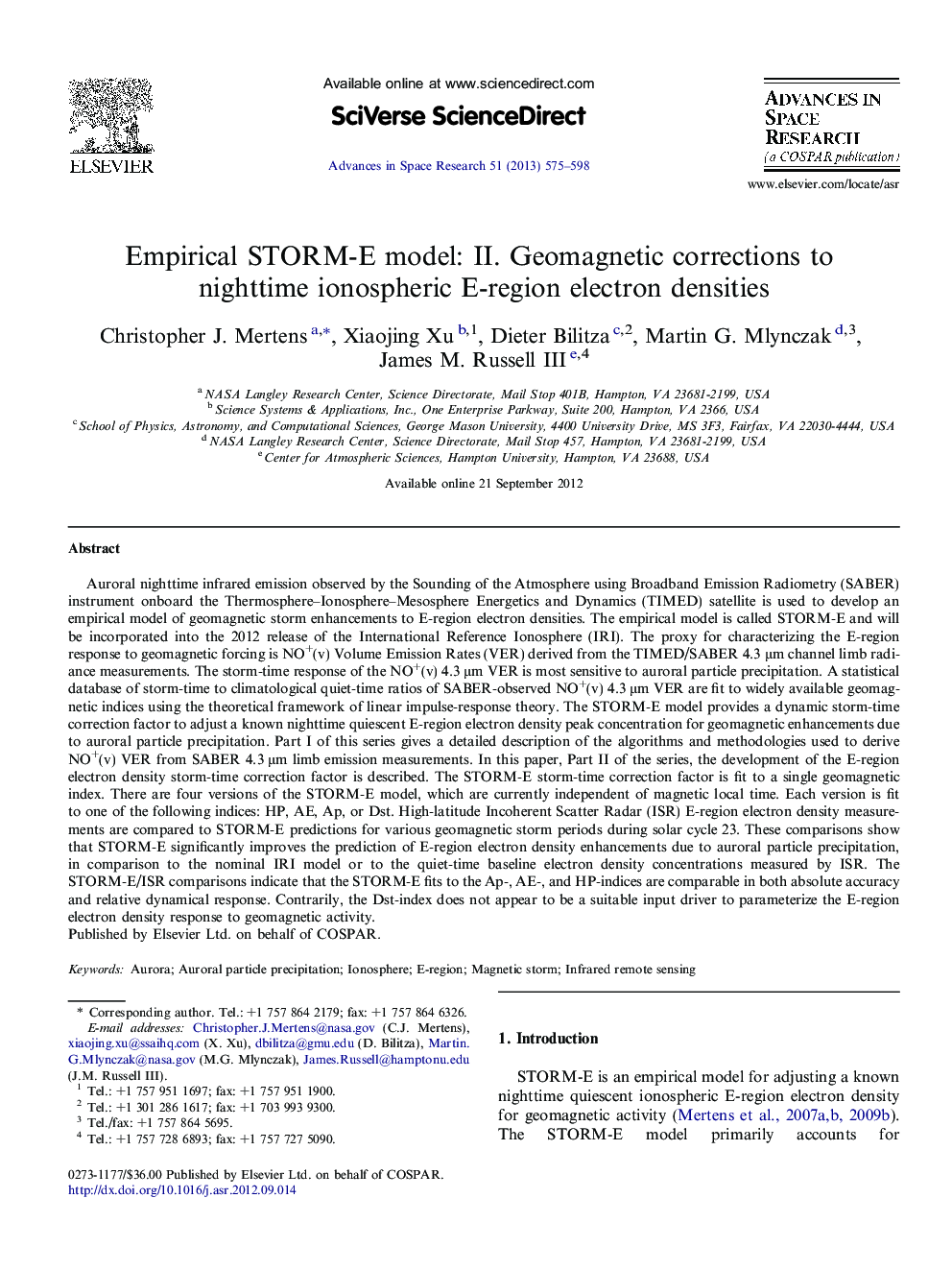| Article ID | Journal | Published Year | Pages | File Type |
|---|---|---|---|---|
| 1764985 | Advances in Space Research | 2013 | 24 Pages |
Auroral nighttime infrared emission observed by the Sounding of the Atmosphere using Broadband Emission Radiometry (SABER) instrument onboard the Thermosphere–Ionosphere–Mesosphere Energetics and Dynamics (TIMED) satellite is used to develop an empirical model of geomagnetic storm enhancements to E-region electron densities. The empirical model is called STORM-E and will be incorporated into the 2012 release of the International Reference Ionosphere (IRI). The proxy for characterizing the E-region response to geomagnetic forcing is NO+(v) Volume Emission Rates (VER) derived from the TIMED/SABER 4.3 μm channel limb radiance measurements. The storm-time response of the NO+(v) 4.3 μm VER is most sensitive to auroral particle precipitation. A statistical database of storm-time to climatological quiet-time ratios of SABER-observed NO+(v) 4.3 μm VER are fit to widely available geomagnetic indices using the theoretical framework of linear impulse-response theory. The STORM-E model provides a dynamic storm-time correction factor to adjust a known nighttime quiescent E-region electron density peak concentration for geomagnetic enhancements due to auroral particle precipitation. Part I of this series gives a detailed description of the algorithms and methodologies used to derive NO+(v) VER from SABER 4.3 μm limb emission measurements. In this paper, Part II of the series, the development of the E-region electron density storm-time correction factor is described. The STORM-E storm-time correction factor is fit to a single geomagnetic index. There are four versions of the STORM-E model, which are currently independent of magnetic local time. Each version is fit to one of the following indices: HP, AE, Ap, or Dst. High-latitude Incoherent Scatter Radar (ISR) E-region electron density measurements are compared to STORM-E predictions for various geomagnetic storm periods during solar cycle 23. These comparisons show that STORM-E significantly improves the prediction of E-region electron density enhancements due to auroral particle precipitation, in comparison to the nominal IRI model or to the quiet-time baseline electron density concentrations measured by ISR. The STORM-E/ISR comparisons indicate that the STORM-E fits to the Ap-, AE-, and HP-indices are comparable in both absolute accuracy and relative dynamical response. Contrarily, the Dst-index does not appear to be a suitable input driver to parameterize the E-region electron density response to geomagnetic activity.
